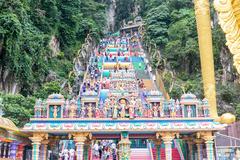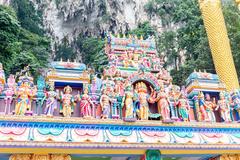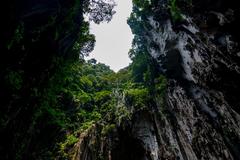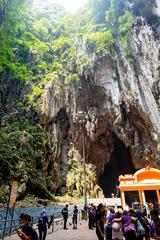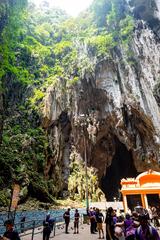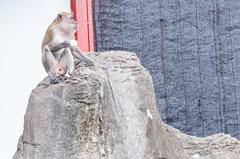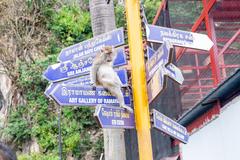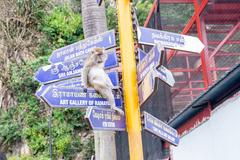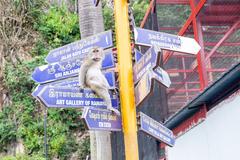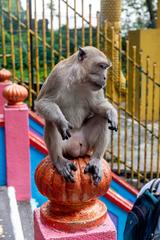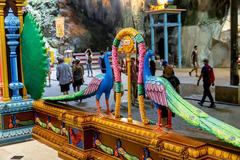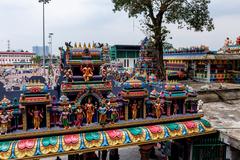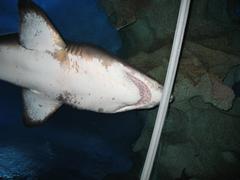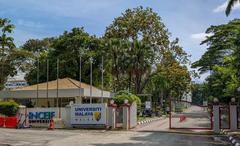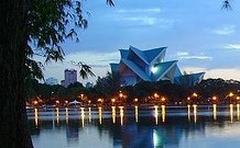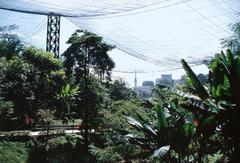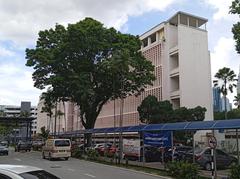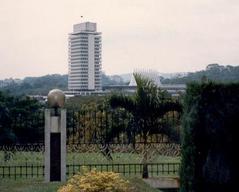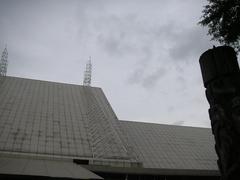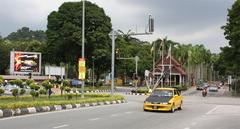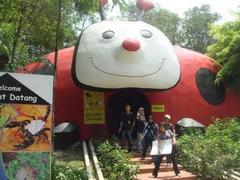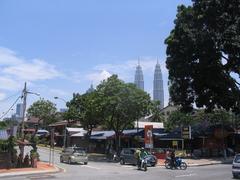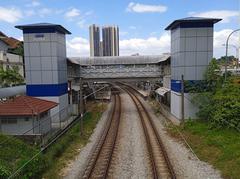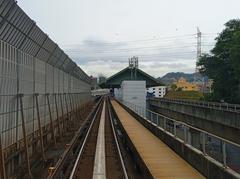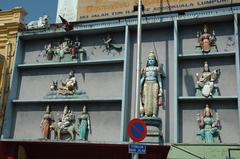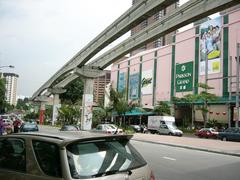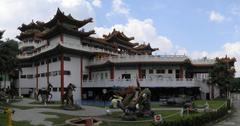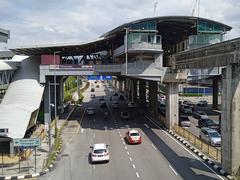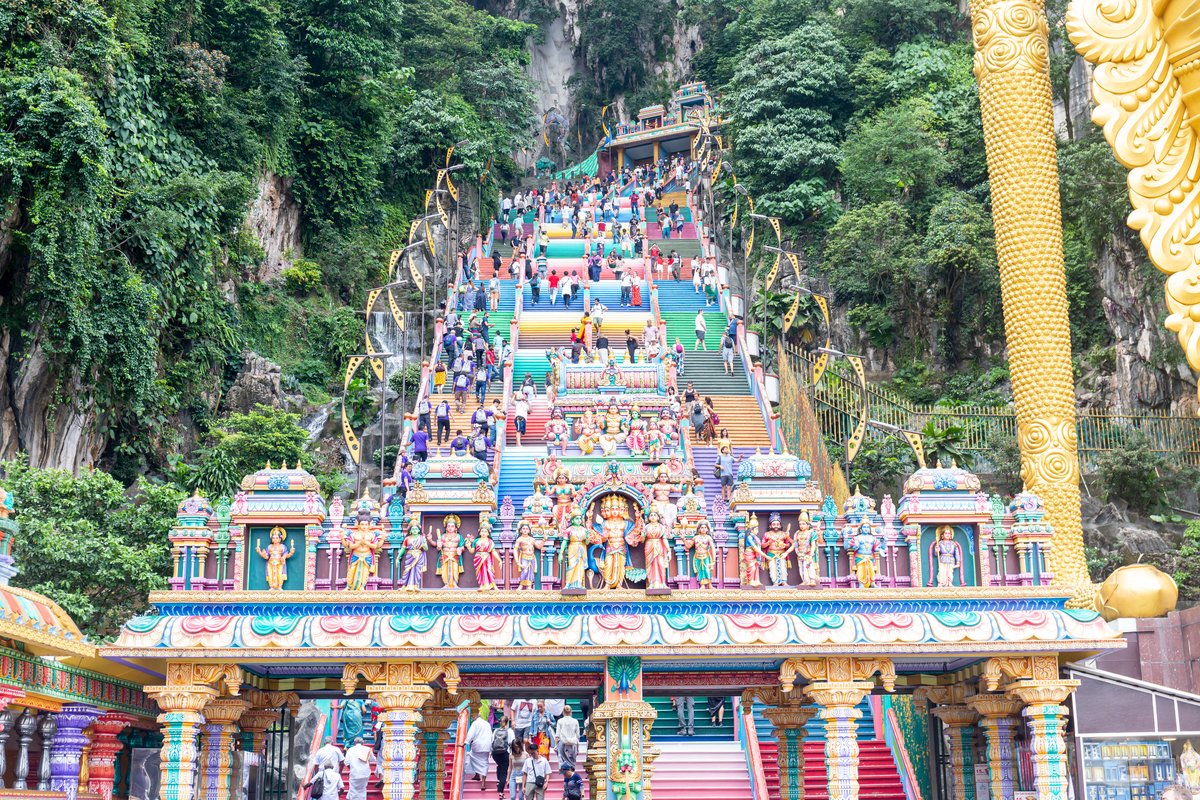
Visiting Batu Caves: Hours, Tickets, and Travel Tips
Published Date: 16/07/2024
Introduction to Batu Caves
The Dark Caves, located within the renowned Batu Caves complex in Kuala Lumpur, Malaysia, are a captivating destination for both tourists and nature enthusiasts. These limestone caves, estimated to be around 400 million years old, boast intricate geological formations such as stalactites and stalagmites that tell the story of Earth’s ancient past. First documented by British colonial explorers in the late 19th century, the Dark Caves have since become a vital part of Malaysia’s natural heritage due to their unique ecological and cultural significance.
The Dark Caves are not just a marvel of nature; they are also a crucial habitat for a diverse range of species, including the Trapdoor Spider and various bat species. These creatures play essential roles in maintaining the cave’s delicate ecosystem. Additionally, the Batu Caves complex is a significant pilgrimage site for the Hindu community, adding a layer of cultural richness to the natural wonders found within the Dark Caves. Conservation efforts led by the Malaysian Nature Society (MNS) have been pivotal in preserving this unique ecosystem, making it a must-visit for anyone interested in geology, ecology, or cultural history (Malaysian Nature Society).
Visitors to the Dark Caves can embark on guided tours that offer educational insights into the cave’s geological and ecological features. These tours are designed to raise awareness about the importance of cave conservation and the need to protect fragile ecosystems. From exploring the cave’s rich biodiversity to understanding the ongoing conservation efforts, a visit to the Dark Caves is both an enlightening and thrilling experience.
Contents Overview
- Introduction
- History and Significance
- Ecological Significance
- Cultural and Religious Significance
- Conservation Efforts
- Tourism and Educational Value
- Visitor Information
- Challenges and Future Prospects
- FAQ
- Conclusion
- Sources and Further Reading
History and Significance
Geological Formation and Early History
The Dark Caves are a significant geological and historical site. These limestone caves, formed through the dissolution of soluble rocks such as limestone, dolomite, and gypsum, are estimated to be around 400 million years old. The process, known as karstification, resulted in the creation of intricate cave systems with stalactites, stalagmites, and other speleothems. Initially submerged underwater, tectonic activities and erosion exposed them to the surface over millions of years.
Discovery and Early Exploration
The Dark Caves were first documented by British colonial explorers in the late 19th century. William Hornaday conducted the earliest recorded exploration in 1878, captivated by the unique geological formations and the rich biodiversity within the caves. Subsequent explorations in the early 20th century revealed more about the cave’s extensive network and its ecological significance. The caves were named ‘Dark Caves’ due to the absence of natural light in most parts of the cave system, creating a pitch-black environment.
Ecological Significance
The Dark Caves are renowned for their unique and diverse ecosystem. The caves are home to several endemic species, including the Trapdoor Spider (Liphistius batuensis), which is considered a living fossil due to its primitive characteristics. The cave’s ecosystem is also supported by a large population of bats, which play a crucial role in maintaining the ecological balance. The guano (bat droppings) provides a rich nutrient source for various microorganisms and invertebrates, creating a complex food web within the cave system.
Bats
The bat population includes several species, such as the Malaysian fruit bat and insect-eating bats, which play essential roles in pollination and insect control. Visitors can often see bats roosting on the cave walls and flying through the tunnels (Bats in Malaysia).
Cave-Dwelling Invertebrates
In addition to bats, the Dark Caves house a variety of cave-dwelling invertebrates like spiders, centipedes, and beetles. One fascinating species is the trapdoor spider, which builds silk-lined burrows in the cave walls (Cave Invertebrates).
The Cave Racer Snake
Another interesting inhabitant is the cave racer snake, a non-venomous snake often seen hunting for bats and other small animals within the cave. Despite its fearsome appearance, the cave racer snake is harmless to humans and plays a vital role in controlling the cave’s rodent population (Cave Racer Snake).
Cultural and Religious Significance
The Batu Caves complex holds immense cultural and religious significance for the Hindu community in Malaysia. The Batu Caves are a major pilgrimage site, especially during the Thaipusam festival, which attracts millions of devotees and tourists annually. The Dark Caves, while not directly associated with religious activities, contribute to the overall significance of the Batu Caves complex by adding a layer of natural wonder and scientific interest.
Conservation Efforts
Preservation Initiatives
In recent years, the Dark Caves have been the focus of various conservation efforts to preserve their unique geological and ecological features. The Malaysian Nature Society (MNS) has been actively involved in promoting the conservation of the Dark Caves through research, education, and advocacy. The caves were temporarily closed to the public in 2018 to allow for restoration and conservation work, highlighting the ongoing efforts to protect this natural heritage site.
Sustainable Tourism
Sustainable tourism practices are encouraged at the Dark Caves to minimize the impact on the environment. Visitors are asked to follow guidelines such as not littering, staying on designated paths, and not touching the cave formations. By following these guidelines, visitors can help preserve the cave for future generations (Sustainable Tourism).
Tourism and Educational Value
Cave Attractions
The Dark Caves feature a 2 km long network of limestone caves with several sections showcasing unique geological formations and historical significance. Renowned for its stalactites and stalagmites, visitors can explore these natural wonders through guided tours that provide insights into the cave’s history and geology (To Dark Caves Tickets).
Adventure Tours
For the more adventurous, the Dark Caves offer spelunking tours that take visitors deeper into the cave system. These tours require a higher level of physical fitness and are not recommended for the faint-hearted. Participants can expect to crawl through narrow passages, climb over rocks, and wade through underground streams, offering a thrilling experience and a chance to see parts of the cave not accessible on regular tours.
Educational Tours
The Dark Caves offer educational tours aimed at school groups and families. These tours focus on the cave’s ecosystem, geology, and history. Guides provide detailed explanations of the cave’s formations and the various species that inhabit it, making them a great option for those interested in learning more about the natural world (To Dark Caves Tours).
Visitor Information
- Dark Caves Visiting Hours: The caves are generally open from 10 AM to 5 PM, but it’s recommended to check the latest timings on the Malaysian Nature Society website.
- Dark Caves Tickets: Tickets are available on-site and usually cost around RM 35 for adults and RM 25 for children. Special rates may apply for groups and educational tours (To Dark Caves Tickets).
- Travel Tips: Wear comfortable walking shoes and bring a flashlight. The caves can be slippery and dark in many areas.
- Nearby Attractions: Besides the Dark Caves, you can visit the main Batu Caves, the Ramayana Cave, and the Cave Villa (Batu Caves Attractions).
- Accessibility: The caves are not wheelchair accessible due to the uneven terrain and steep steps (Accessibility Information).
Challenges and Future Prospects
Despite the efforts to preserve the Dark Caves, they face several challenges, including environmental degradation, pollution, and the impact of tourism. The caves are vulnerable to changes in temperature, humidity, and human activities, which can disrupt the delicate ecological balance. Ongoing research and monitoring are essential to ensure the long-term preservation of the Dark Caves. Future prospects include the development of sustainable tourism practices and enhanced conservation measures to protect this invaluable natural heritage.
FAQ
- What are the visiting hours for Dark Caves? The Dark Caves are usually open from 10 AM to 5 PM, but it is advisable to check current timings on the official website (To Dark Caves Visiting Hours).
- How much are the tickets for Dark Caves? Tickets typically cost around RM 35 for adults and RM 25 for children. Group discounts may apply (To Dark Caves Tickets).
- Are the Dark Caves accessible for people with disabilities? Unfortunately, the caves are not wheelchair accessible due to uneven terrain and steep steps (Accessibility Information).
Conclusion
The Dark Caves in Kuala Lumpur, Malaysia, are a testament to the intricate interplay between geological processes, ecological diversity, and cultural significance. Their rich history, unique ecosystem, and ongoing conservation efforts make them a vital part of Malaysia’s natural heritage. As a site of scientific interest and a popular tourist destination, the Dark Caves continue to captivate and educate visitors from around the world.
For more information on the Dark Caves and their conservation efforts, you can visit the Malaysian Nature Society website. Stay updated on the latest developments and follow us on social media for more insights and tips!
